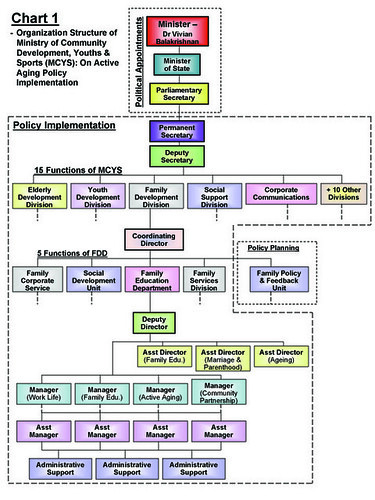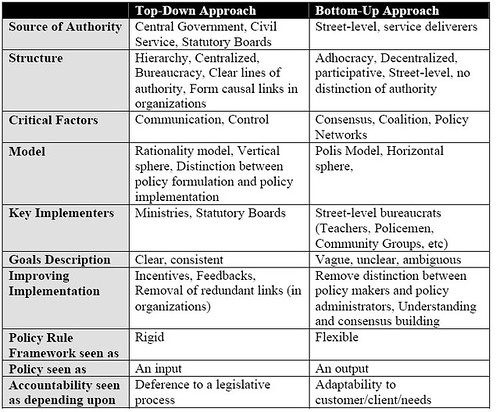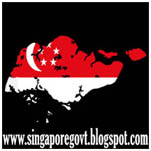No “Singapore Politics” will be complete without the historical perspectives of PAP and Singapore’s Independence. In the first part, I hope to bring some history that is outside of our textbooks (or propaganda, depends on how you see it), and shed light on why PAP is the PAP we know today. Younger Singaporeans, like me, may not know of the insights on the founding of PAP and the true leaders (aside from the much-publicized Lee Kuan Yew) that made us from a British outpost to a country. But hopefully, in understand our past; we can derive thoughts to prepare us for the future. This first part will provide some interesting look (hopefully) into the history of PAP from 1955 to 1965. This will also serve as a starter to 6 leaders of Singapore, Dr Toh Chin Chye, Dr Goh Keng Swee, Lim Chin Siong, Devan Nair, S Rajaratnam and Lim Kim San.
The Malayan Forum
The PAP’s origins can be traced to the Malayan Forum started by Dr Goh Keng Swee. The Forum comprised of a group of students who met in Malaya Hall, Bryanston Square, London. It united students from the Left and Right in the fight for independence of Malaya and Singapore. The Malacca-born Goh Keng Swee, who was at London School of Economics, was the first Chairman. He was succeeded by Toh Chin Chye, who was reading for doctorate in Physiology. Other members included John Eber, Lim Khean Chye, Tun Razak, Gazalie Shafie and Mohammad Sopiee, some of them became prominent in the independence of Malaya. However, the membership never exceeded 50. They considered themselves as socialism, a term that many confused with Communism, which purports to “benefit the people” according to Dr Toh Chin Chye.
 Some of them, with the passion of Independence, took up the political cause and came back to Singapore in 1953. Later, Dr Goh, Kenny Byrne and Dr Toh formed the Council for Joint Action with Lee Kuan Yew as the legal advisor. That was how LKY got involved in union politics. During then, LKY was also the legal advisor to Samad Ismail (editor of Utusan Melayu and ex-detainee), Lim Chin Siong and Devan Nair. The newly returned graduates from Cambridge and London gathered fortnightly at the basement of LKY’s rambling Straits-Style bungalow in Oxley Road. It was coined as “The Underground”, suitably apt considering the risk of being arrested under Internal Security regulations that forbade such political meetings. The regulars in the meeting included LKY, Dr Toh, S. Rajaratnam, K. Byrne, Samad Ismail, Devan Nair, Kum Swee Yee, Goh Keng Swee, Chan Chiaw Thor and Lim Chin Siong.
Some of them, with the passion of Independence, took up the political cause and came back to Singapore in 1953. Later, Dr Goh, Kenny Byrne and Dr Toh formed the Council for Joint Action with Lee Kuan Yew as the legal advisor. That was how LKY got involved in union politics. During then, LKY was also the legal advisor to Samad Ismail (editor of Utusan Melayu and ex-detainee), Lim Chin Siong and Devan Nair. The newly returned graduates from Cambridge and London gathered fortnightly at the basement of LKY’s rambling Straits-Style bungalow in Oxley Road. It was coined as “The Underground”, suitably apt considering the risk of being arrested under Internal Security regulations that forbade such political meetings. The regulars in the meeting included LKY, Dr Toh, S. Rajaratnam, K. Byrne, Samad Ismail, Devan Nair, Kum Swee Yee, Goh Keng Swee, Chan Chiaw Thor and Lim Chin Siong.With special attention from the “Special Branch” (old version of ISD), they would always be watched and risk being detained without trial. Thus Dr Toh suggested forming a political party and registering as a society to avoid such complications. That is how the “Action Party” was formed and later, they added the word “People” into it.
The New People’s Action Party
In the early years, recruitment amongst their English-speaking colleagues was not going well. Dr Goh Keng Swee introduced his chess partner, Dr Lee Siew Choh (later joined Barisan Socialis) and Dr Toh brought in Yong Nyuk Lin, who enjoyed a promising career in Overseas Assurance. Just a handful responded to the PAP’s Democratic Socialism, seen as dangerously Left-Wing. Thus it fell to Lim Chin Siong and his trade union colleagues: Fong Swee Suan, Devan Nair, James Puthucheary and Samad Ismail to bring in the masses: the trade unions, the workers and the Chinese school associations.
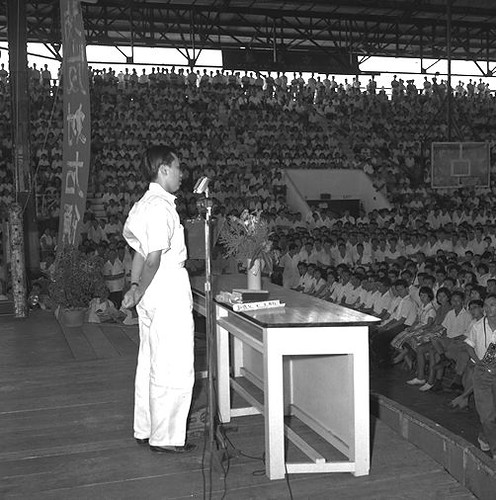 The Man Who Almost Became PM
The Man Who Almost Became PMIt was a job which Lim Chin Siong did superbly. His rallies in Hokkien and Mandarin were masterful. His rallies were attended by some 40,000 people, each mesmerized by Lin Chin Siong’s oratory. “The British say you cannot stand on your own two feet,” he jeered. “Show them! Show them how you can stand!” And 40,000 people leapt up, shining with sweat, fist in the air, shouting “Merdeka!”
“You have to understand,” said Devan Nair, “the mood of the people at that time. There was bitter anti-colonialism. Massive unemployment. And to the masses, the Communist was the only heroes. Lim Chin Siong had the ground. Where the masses were concerned, Chinese trade union leaders and the Communist were the only leaders.”
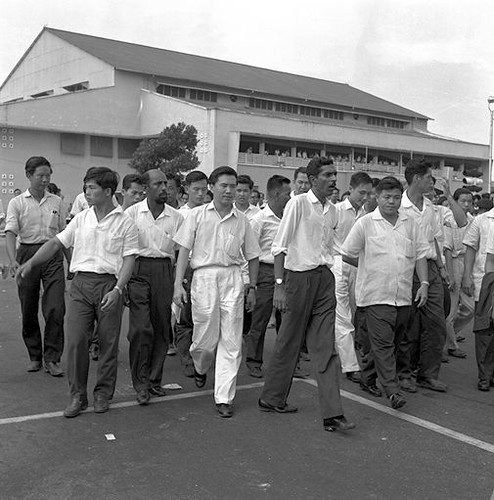
Lim certainly had the respect of Lee Kuan Yew. David Marshall said, “Chin Siong was introduced to me by Lee Kuan Yew. Kuan Yew came to visit me in my little office underneath the stairs and said, “Meet the future Prime Minister of Singapore!” I looked at Lim Chin Siong and I laughed. LKY said, “Don’t laugh!” He is the finest Chinese orator in Singapore and he will be our next Prime Minister!”
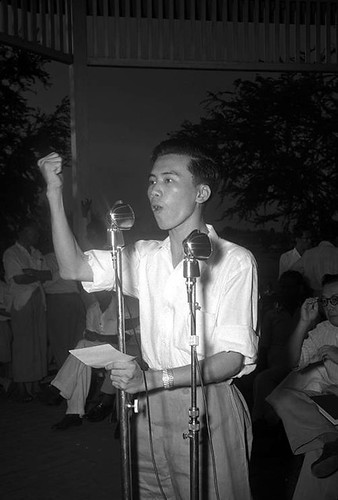
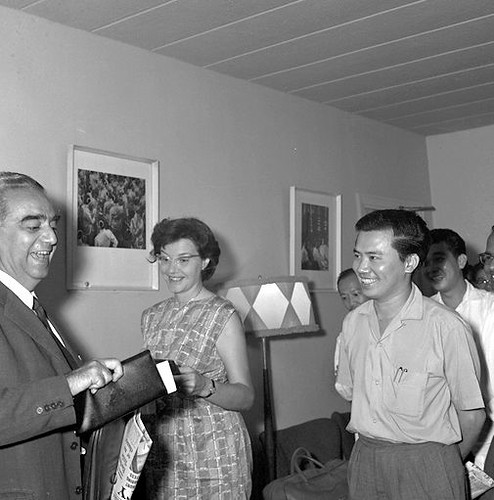
David Marshall and Failure from Independence
David Marshall led the first Merdaka Mission to open negotiations with the British for Independence of Singapore. Constitutional discussions began in London in April 1956. On board, representing the PAP, were Lim Chin Siong and Lee Kuan Yew.
The mission returned in failure and their demands for independence were refused. The British felt that the Labour Front government was too weak and the Communist elements in Singapore too powerful. If there was to be independence, the British fears needed to be calmed. David Marshall resigned and Lim Yew Hock took over as Chief Minister. He had two objectives. Firstly, he had to prove to the British that Singapore was able to resist Communism. Secondly, he wanted to purge the trade unions, schools and political parties of pro-Communist and Left Wing Leaders who were beginning to threaten the rule of the moderate politicians such as himself and LKY. Thus began a series of arrests under the Public Security Ordinance. Lim Chin Siong, Devan Nair and Fong Swee Suan were some of the prominent politicians being detained. (This issue will be dealt with in further details under Lim Chin Siong and Devan Nair at Part III)
 It was Lim Yew Hock who took both blame and credit for the waves of Internal Security arrest. But the PAP was undoubtedly the main beneficiary of his tough regime. Lim Yew Hock arrested five Left Wing PAP members, newly elected onto the party’s Central Executive Committee (CEC) in August 1957, delivering the PAP from what was effectively a Left Wing Coup. Shortly after, PAP introduced the “cadres system” (to be elaborated under Dr Toh Chin Chye section at Part II), which prevented any further Left Wing infiltration into the party’s inner core.
It was Lim Yew Hock who took both blame and credit for the waves of Internal Security arrest. But the PAP was undoubtedly the main beneficiary of his tough regime. Lim Yew Hock arrested five Left Wing PAP members, newly elected onto the party’s Central Executive Committee (CEC) in August 1957, delivering the PAP from what was effectively a Left Wing Coup. Shortly after, PAP introduced the “cadres system” (to be elaborated under Dr Toh Chin Chye section at Part II), which prevented any further Left Wing infiltration into the party’s inner core.Independence from the British
The next Constitutional Mission to London in April 1958 was a success. Under the State of Singapore Act in August 1958, the colony became a self-governing state. Elections for the new 51 member Legislative Assembly were scheduled for May 1959. Lim Yew Hock was given a hero’s welcome on his return and a noisy motorcade from Kallang Airport.
The Dilemma and Shrewdness of LKY
In the run-up to 1959 elections, the PAP was in a dilemma. The Party was to be led into the elections by LKY and his Right Wong colleagues. But they needed the Left Wing leaders, who were in prison to attract the following of the masses.
“It was at that point that Kuan Yew played his political cards superbly,” remembers Devan Nair. “It was masterly. He is politically very, very shrewd. He came to the jail and told us, look, I’m not gong to stand for elections unless I am satisfied that you are really committed to the ideal of a free, democratic, socialist and non-communist Malaya. And you are committed to the policies of the PAP. So Chin Siong, Woodhull, Fong and so on, gave verbal assurances. We knew that if the PAP didn’t form the next government we would continue to be in the jug (aka jail). But if the PAP did win, in 1959 and if PAP formed the next government, then we would be released and we could start our union work again.”
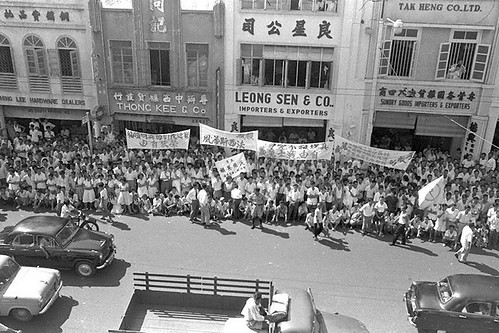
“But Kuan Yew was too smart. He said, “No, put it down in writing.” And I (Devan Nair) told them, “Yes, if we are sincere, we ought to put it down in writing.” And the more important of which was The Ends and Means of Malayan Socialism”, said Devan. They all signed and committed themselves to the PAP. This enabled LKY to run for office on a platform which demanded their immediate release. The trade unions mobilized their mass muscles, putting the PAP into power by a landslide. The PAP formed the government with LKY as the Prime Minister.
Lim Chin Siong and his colleagues, released from jail amidst a flurry of doves, were tucked into obscurity as Political Secretaries in the Ministries.
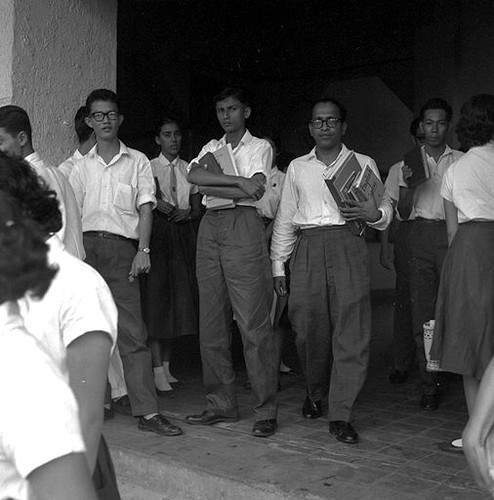 Cracks and Split in PAP
Cracks and Split in PAPAs the PAP government settled into power, the uneasy union between the Left and Right continued. The first sign of trouble was Devan Nair’s resignation from the Education Ministry. “I went to Kuan Yew and told him, “Look, I meant every word of The Ends and Means of Malayan Socialism. But I am afraid that my friends are not sincere. I don’t want to be caught in a situation where I’ll be fighting with my friends. So I want to leave. I’m resigning.” He went to St Andrew’s School where he became a teacher there instead.
The next crack came when one of the most powerful members in PAP, Ong Eng Guan, the Minister of National Development and one of the three representatives on the Internal Security Council, published an attack on PAP. He accused the party leadership of being “undemocratic” and “dictatorial”. The Party responded by sacking him from the PAP and stripped of his seat in Hong Lim and all his other positions.
He defiantly stood as an Independent in the Hong Lim by-elections and gave the PAP candidate, Jek Yuen Thong, a sound beating. Ong was fluent in dialect and Mandarin; a rarity amongst the English educated. Despite the PAP sending the charismatic Lim Chin Siong to speak at the mass rally at Hong Lim, Ong Eng Guan still won.
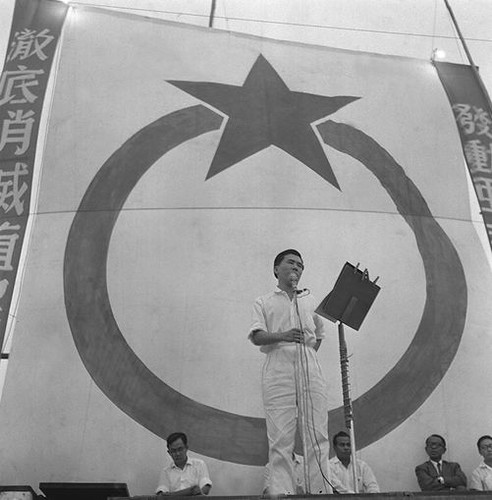 This is not the end of the crisis for PAP. On June 1961, Lim Chin Siong wrote to Dr Toh, demanding the release of their Left Wing political colleagues. PAP could not agree to this with their prior agreements with the British. The beginning of the split between Left and Right was the Anson By-elections on July 1961. The Left demanded “internal democracy in the PAP” and the release of all political prisoners from detention. They were refused. The Left then threw their support to the rival candidate, David Marshall and he won.
This is not the end of the crisis for PAP. On June 1961, Lim Chin Siong wrote to Dr Toh, demanding the release of their Left Wing political colleagues. PAP could not agree to this with their prior agreements with the British. The beginning of the split between Left and Right was the Anson By-elections on July 1961. The Left demanded “internal democracy in the PAP” and the release of all political prisoners from detention. They were refused. The Left then threw their support to the rival candidate, David Marshall and he won.The final split came just few days later in the Legislative Assembly. Thirteen Left Wing PAP Assemblymen abstained from voting with the party line. They were dismissed from the PAP. In August 1961, they formed a rival party, the Barisan Sosialis, led by Dr Lee Siew Choh and Lim Chin Siong. They took 35 branch committees, 19 of the 23 organizing secretaries and an estimated 80 percent of the membership. PAP under LKY was a mere shell, according to Dr Lee.
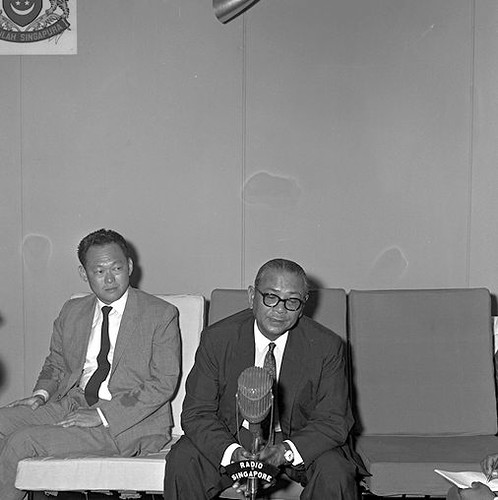 The Last Breathe of Hope for PAP
The Last Breathe of Hope for PAPThe Singapore government was on the verged of being toppled. Every session, the opposition would motion of no confidence. But across the shores, the Prime Minister of the Federation of Malaya, Tengku Abdul Rahman, watched the events and feared that Singapore was about to become a Communist State, a “second Cuba” and a danger to Malaya. Thus, this was the start of the intense and frantic, Battle for Merger.
Barisan Sosialis held sway in Singapore but it knew that in a wider Malaysia they would be crushed. On the other hand, PAP needed Malaysia to break the Barisan’s hold on the Singapore Electorate. Thus, they enlisted Malayan Tengku and the British as allies, playing on their long standing fear of Communism.
On July 1962, the Barisan Sosialis, led by David Marshall and Dr Lee Siew Choh, appealed against the merger in the United Nations in New York. The Merger Referendum, issued in 1962, was testimony to the murkiness of the Battle. It was deliberately ambiguous. It asked voters to choose what kind of merger they wanted, not whether indeed they wished for a merger. All spoilt votes were to be counted as votes in favour of merger. With this controversial tactic, the PAP won the Battle for Merger.
Tengku then decided to clean out the Communism with “Operation Cold Store”. Hundreds of arrest was made and effectively decapitated the Left Wing Barisan Sosialis. A snap elections was called, under the protection of the Malaysian Security Council, produced a clear PAP victory. The Barisan, with most of their leaders in prison, garnered only 13 out of 51 seats. On September 1963, the PAP government had won its battle against the Left.
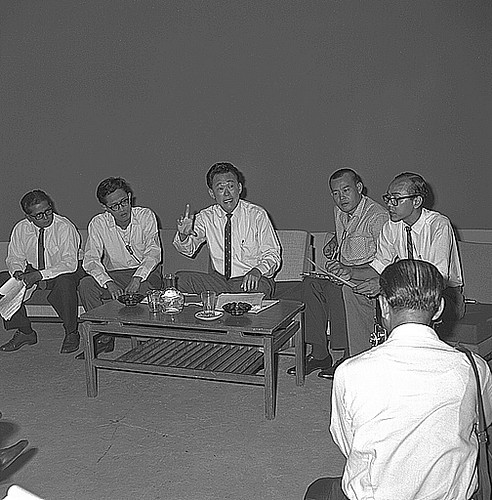 Merger and Separation of Singapore
Merger and Separation of SingaporeSingapore spent 1071 days in Malaysia. Perhaps the first Singapore Leader to despair was Goh Keng Swee (more details on Part II). The integration of the economies of Malaya and Singapore was scuppered by the competitive rather than complementary nature of the two countries. Malaya refused to drop her tariff walls to admit Singapore goods and Singapore refused to abandon her free-port tax regime. Things got ugly with “mud-slinging”, a steadily rising political and racial temperature.
The independence of Singapore on the 8th August 1965 came as a total shock to most of the country. They were informed by radio and over television, by a tearful Lee Kuan Yew. He was to retire (to seek solace), in despair, to a government bungalow in Changi. Dr Toh, with his colleagues, held the fort and provided the much needed stability when LKY was no where to be seen.
Coming Soon: Part 2: Old Guards and Leaders of Singapore I
True Founders of Singapore: Dr Toh Chin Chye and Dr Goh Keng Swee
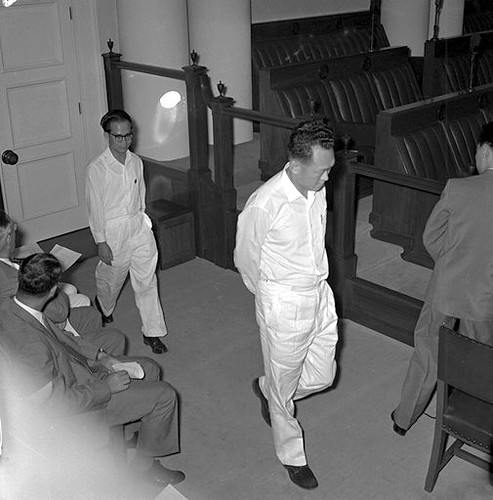
Both men were the pioneering members of PAP and Deputy Prime Ministers of Singapore. One is the founding Chairman of the PAP, the other the true architect of Singapore’s success. In the confusion of Singapore’s sudden separation with Malaysia, PM Lee Kuan Yew wept on national television and withdraws to a government bungalow in Changi. But behind the scene was the stabilizing force of Dr Toh Chin Chye made the chaos orderly. Dr Toh also played a crucial role in the development of Science and Technology in industrialization of Singapore. As for Dr Goh Keng Swee, he is widely hailed as the true architect of Singapore’s success with his visionary leadership. He was first Defense Minister and practically transformed the swarm lands of Jurong into an industrial oasis.
Source: Leaders of Singapore, by Melanie Chew (1996) and Photos from National Archives. Not for reproduction.




